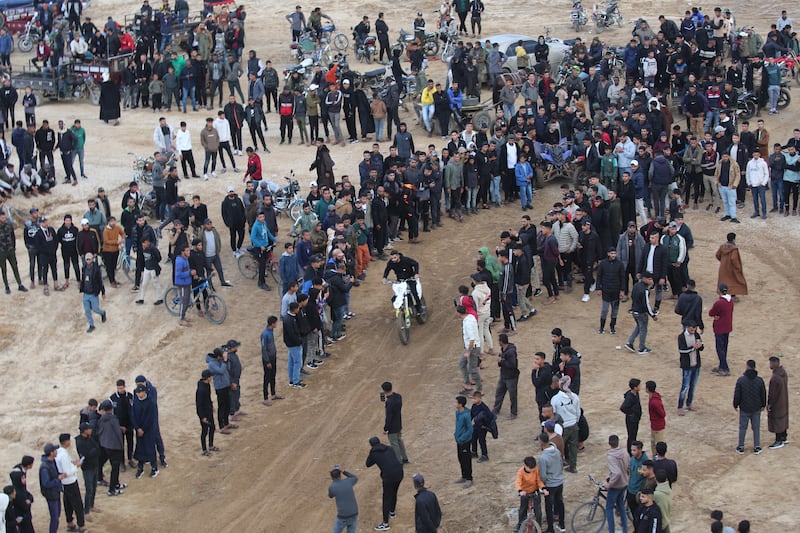Large predators are returning to Europe, with wolves making a comeback in Germany, France and Scandinavia. Recently wolves even turned up in Denmark for the first time in 200 years.
Some countries are going so far as to reintroduce bears, with a few brought in to the French and Spanish Pyrenees from Slovenia.
Ireland once had both wolves and bears, with wolves going extinct only around the 1780s. The idea of reintroducing them to the Irish countryside seems ludicrous, though many of us expect people elsewhere to live with large predators in their midst.
Sri Lanka is a nation in the Indian ocean roughly the same size as Ireland. Along with 20 million humans, the island is home to hundreds of leopards, a large and potentially dangerous predator. Some live in national parks, such as its famous Yala National Park to the south, where they are the star attraction for a lucrative tourist industry.
In the parks, the leopards are relatively easy to spot. This is the only place in the world where they are naturally the top cat – there have been no tigers or lions on the island for at least 10,000 years. In the dry bush of Yala, the leopards hunt mainly axis and sambar deer.
Leopard density
"Their strongest redoubts are in the lowland dry national parks, where prey is substantially abundant. Leopard density is strongly linked to prey abundance," says Andrew Kittle, founder of the Wilderness & Wildlife Conservation Trust in Sri Lanka.
He recently discovered, however, a surprising number of more secretive leopards living close to people, such as around tea plantations. “In degraded, highly human-impacted habitat outside parks in the central highlands, the density is lower but still reasonable due to a variety of prey,” Kettle says. So long as there is prey and forest cover, the leopards continue to survive and live close to people.
In these unprotected areas, often right beside villages and towns, the leopards prey on deer, porcupine, hare and monkey. Kettle discovered that even small forest patches can be incredibly important for the leopards.
“We have tracked individuals residing in small patches, less than five square kilometres, for up to seven years. As Sri Lanka has a lot of these small patches, this is relevant to the long-term conservation of the species here,” he adds.
The protected national parks of Sri Lanka are not all connected and leopards are a wide-ranging species that naturally live at low densities. For the leopard to continue to live in Sri Lanka, it will need to continue to move between areas. This strengthens the genetics of the population and spreads out risks from local extinctions. Kettle hopes to get protection for natural corridors that connect leopard populations and for some of the central highlands where the leopards live.
These highlands are a patchwork of tea estates, river valleys, eucalyptus and pine plantations, grasslands and scrub areas. Sprinkled throughout are tea estate villages and towns. “People are generally aware in an abstract way that the leopards are there, but typically don’t like to see or have too much evidence of them,” Kettle notes. “Leopards here are using temporal niche partitioning, meaning they are using the same trails and roads as people use in the day, except at night.”
Wolves in Ireland
Ireland at present has an uncounted and expanding number of deer, which are without a natural predator to keep them in check with their environment. The introduction of wolves could sort this issue out, and wolves have a longer history in Ireland than most, if not all, our deer species.
"Wolves arrived in Ireland 20,000 years ago and have been present right up to the late 1700s," points out Kieran Hickey, climate scientist at University College Cork and author of the book Wolves in Ireland.
There was no part of the countryside that wolves were not present in, with the exception of large midland bogs. There were reports from medieval Dublin of wolves hunting on its outskirts in Kilmainham. Irish wolves probably ate wild boar, small mammals, birds, fish, rodents and fruit, anything they could find.
Hickey isn't surprised that wolves are spreading back across Europe, from reserves in Spain, Italy, eastern Europe and Alpine areas. "They are highly mobile and are excellent swimmers," Hickey says. As for returning to Ireland, however, Hickey says he can't see that ever happening.
“They require a large territory. One of the big issues with large predators is that once you lose them, people lose the skills to deal with them,” he says. “The Maasai [in east Africa] still deal with lions, but they know what precautions to take.”
Where predators still live among human populations, the focus is on keeping them there and managing their interactions with people. Bringing them back is a big ask in that respect.


















